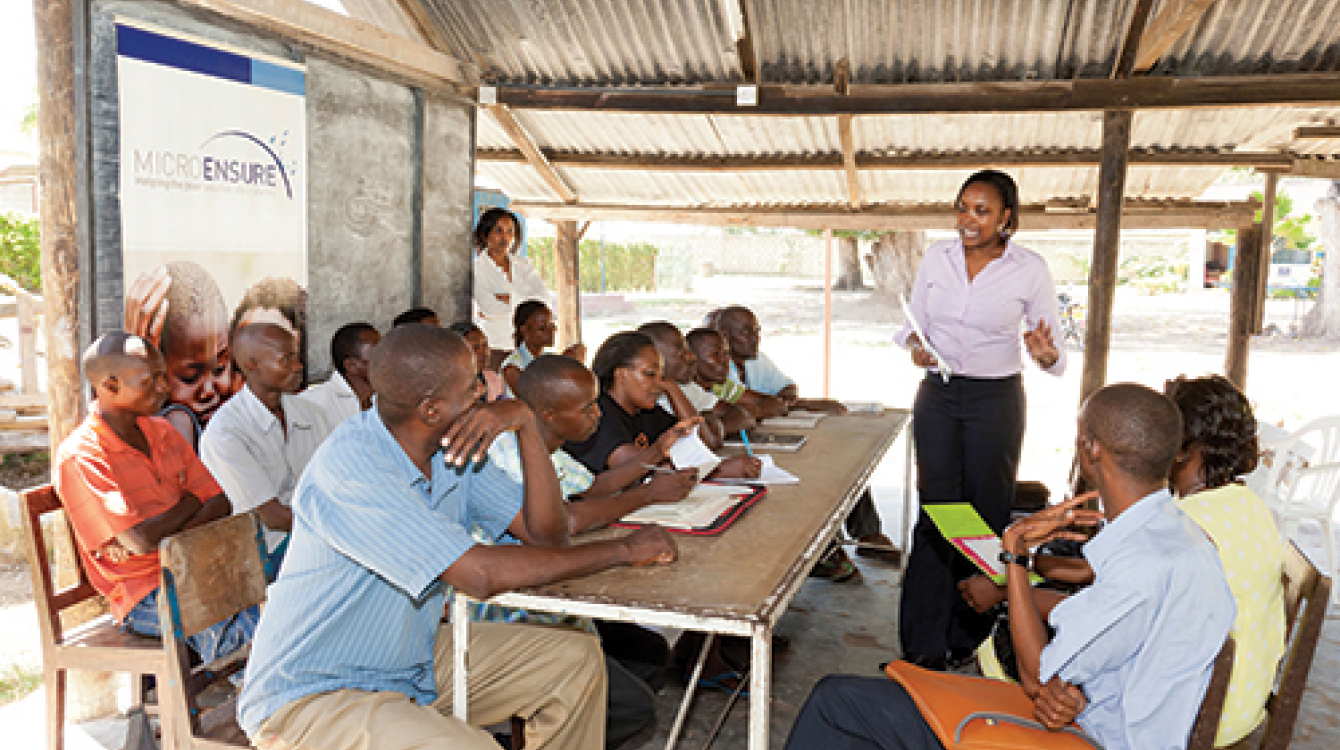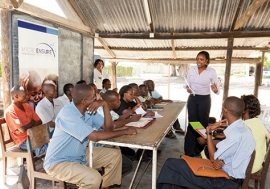Microfinance: Good for the poor?
Microfinance: Good for the poor?
In 2005 the United Nations declared the year the International Year of Microcredit. At a time when the clamour for financial inclusion was gaining momentum, the declaration brought microfinance from the periphery of finance and offered an estimated 2.5 billion people an opportunity to “grow thriving businesses and, in turn, provide for their families, leading to strong and flourishing local economies.”
At that time it was widely believed that reducing extreme poverty would be nearly impossible if the majority of the poor could not save or have access to credit. Small lenders were hardly entering into the mainstream financial sector. Their loans were restricted to under $200 at high interest. The rigidity of commercial banks meant that microfinance institutions (MFIs) offered the only hope for financial inclusion to the world’s poor. Then UN Secretary-General Kofi Annan acknowledged as much when he declared that microfinance could be a “weapon against poverty and hunger.”
A decade later the world has an opportunity to evaluate whether microcredit really “changes peoples’ lives for the better,” as Mr. Annan asserted. In July of this year, the UN will hold the Third International Conference on Financing for Development, in Addis Ababa, Ethiopia. While the conference will discuss the whole spectrum of effective and efficient mechanisms of mobilizing resources for development, microfinance is likely to be one of the key topics.
The timing is critical because the contribution of microcredit in achieving the Millennium Development Goals, a set of global benchmarks for UN Member States that is set to expire in 2015, has been minimal. The MDGs will be replaced by the proposed Sustainable Development Goals (SDGs), to be endorsed at the September 2015 summit of world leaders at UN Headquarters.
Arguably, the microfinance movement is vital to the development agenda. The success of the movement in a country like Bangladesh, where there are a staggering 20 million micro-borrowers, has shown that microfinance can lift millions out of abject poverty.
China, which over a single generation has become the world’s second biggest economy, has also proven that microfinance can help enterprises flourish. Until 2005, China did not allow MFIs. A decade earlier the government had started experimenting with microfinance as a tool in poverty reduction, and in 2005 it allowed the commercialisation of microfinance. This opened the floodgates for resources that help tackle poverty and spur the growth of enterprises in rural areas, where the majority of the country’s 400 million people who live on less than $2 per day are concentrated. Since the approval of microcredit, the industry has grown exponentially.
In sub-Saharan Africa, governments now appreciate the impact of microfinance and have enacted favourable laws, encouraged investments, opened up the industry to foreign capital and improved policing mechanisms to protect customers. The growth of the industry is a testament to the high demand for microcredit.
“Microcredit is an effective catalyst in alleviating poverty in Africa. People need access to capital to grow their informal and formal businesses that offer them a regular income and enable them to lead decent lives,” says Mads Kjaer, chief executive of MYC4, a Denmark-based online platform that helps individuals to loan money to small enterprises in sub-Saharan Africa. The average loan is about $150 per month.
The growth of microfinance in Africa since 2000 has been inspiring. Data by Microfinance Information Exchange, a non-profit organisation that keeps track of the industry, shows that from 2002 to 2012 the industry expanded by more than 1,300%. During this period, gross loan portfolio leapfrogged from $600 million to $8.4 billion. The number of microfinance customers or depositors shot from 3 million to 20 million, with active borrowers increasing from 3 million to 7 million.
In countries like Benin, Rwanda, Senegal and Tanzania, microfinance has become a lifeline for low-income earners, who are largely in informal sectors. In Benin, where a third of the population lives on less than $1.25 a day, peasant farmers, food processors and small-scale traders depend entirely on microcredit for survival. This has even forced the government to join the sector by setting up the National Microfinance Fund, which is designed specifically to tackle poverty in rural areas by extending small loans. In Rwanda the growth of the microfinance sector is outpacing that of the official banking sector.
“Microfinance does not get the credit it deserves, yet it is the lifeline for the people at the bottom of the pyramid,” says James Mugambi, the managing director of Premier Kenya, a micro-lender with customers across East Africa.
Despite the impressive growth of microfinance in Africa, its impact in alleviating poverty remains relatively marginal, some critics say. The industry still serves a small fraction of the population and offers loans that are expensive and short-term. Its impact has thus largely been on basic household units, where small loans offer families opportunities to earn regular income through small enterprises, pay expenses like school fees, invest in livestock or buy solar lighting, among other things.
“Microcredit is not an effective way to reduce poverty,” observes Aneel Karnani of the Ross School of Business at Michigan University in the US. “The best way to reduce poverty is to create significant job opportunities suited for the poor. The best engine for doing that is small and mid-size enterprises, not micro-enterprises.”
Addis conference
The Third International Conference on Financing for Development will thus be faced with the unprecedented challenge of unlocking the stunted potential of microfinance to guarantee sustainable impact. Notably, it comes at a time when the microfinance industry is at a crossroads. Today microfinance risks being annihilated in many sub-Saharan African countries as commercial banks adjust their business models to accommodate small savers and borrowers. But probably the biggest threat to MFIs is from telecommunication companies, which are targeting micro-lenders’ clients with mobile banking.
A new World Bank report says mobile banking has become the panacea in Kenya for financial inclusion. The Measuring Financial Inclusion around the World report shows that a staggering 75% of the Kenyan population is banked, the majority through mobile phones. Mobile banking is now being hailed as more viable than microfinance. “Mobile banking will help the poor transform their lives,” said Bill Gates, one of the world’s richest men, referring to M-Pesa, a mobile banking product in Kenya.
According to Mr. Kjaer of MYC4, the Addis Ababa conference must explore the bottlenecks that have hindered microfinance from realising its full potential in poverty alleviation. “Microfinance is a tool that Africa cannot do without,” he says. “What we need are new and innovative ways and business models to make it more attractive.”
One potential way for microfinance to salvage its fading allure is by capitalization. In its current setup, the majority of MFIs in Africa are highly undercapitalized. Many are operating just above the threshold demanded by regulators. As a result of undercapitalization, MFIs are forced to spread risk by offering only small loans to many people at absurd interest rates.
Directing capital into microfinance to enable lenders to provide bigger loans at lower rates and with long maturity times would make it easier for the industry to contribute effectively in reducing poverty. While the natural sources of capital are donors and private investors, the industry can also tap into cheap capital being held by sovereign wealth funds and pension funds. By the end of 2013, the total assets of sovereign funds stood at $5 trillion across the globe.
“There are resources that can be made available to MFIs, but there is need for proper policing,” notes Mr. Kjaer.
Another potential strategy is to change the primary goal of microcredit. Traditionally microfinance is perceived as a quick-stop shop for emergency domestic loans. A more sustainable approach would be to change the industry’s mind-set so that it becomes a source of funds for enterprises that have the potential to expand and employ more people.
Pushing microcredit as a development tool to an increasingly sceptical world during the Addis meeting may be a hard sell. However, failing to convince stakeholders of the need for microfinance in poverty alleviation could be suicidal for the industry. It is imperative to note that the growth of microfinance over the past decade has been propelled largely by goodwill, mainly from development partners and the Norwegian Nobel Committee, which awarded the 2006 Nobel Peace Prize to Muhammad Yunus and Grameen Bank for giving loans to entrepreneurs too poor to qualify for traditional bank loans.























